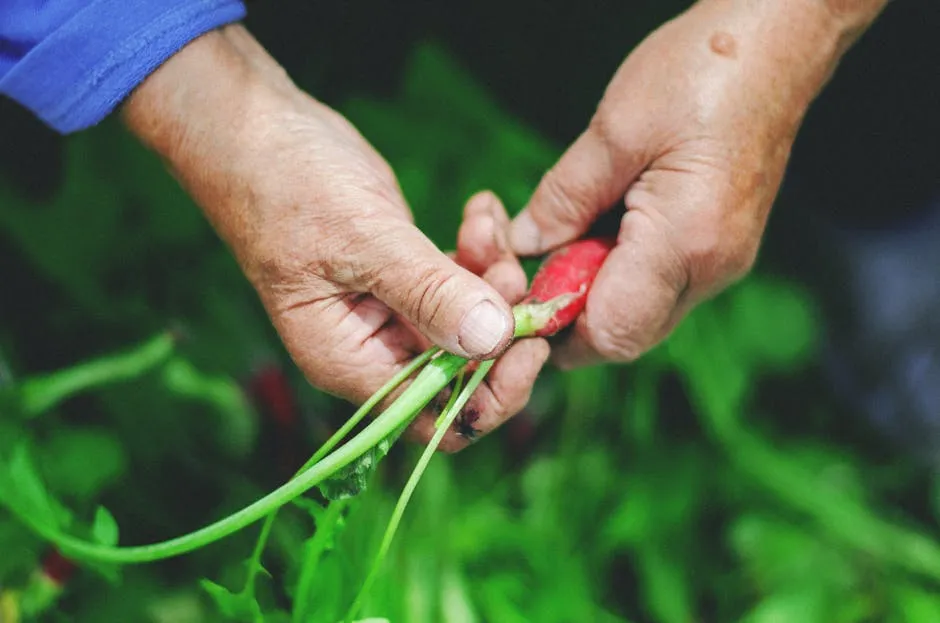Introduction
Web Soil Survey (WSS) is a powerful tool. It provides easy access to vital soil data. Farmers, landowners, and researchers find it incredibly useful. With extensive coverage across the United States, WSS serves as an essential resource for soil-related inquiries.
Summary and Overview
Web Soil Survey (WSS) is an online platform for soil data access. Operated by the USDA’s Natural Resources Conservation Service (NRCS), it plays a crucial role in soil management and conservation. The service offers soil maps and data for over 95% of U.S. counties, with plans to achieve complete coverage soon.
This tool helps landowners make informed decisions about agriculture, land use, and environmental conservation. The insights gained from soil data can significantly impact planning and management strategies, leading to healthier soils and more sustainable practices. By making this information readily available, WSS empowers users to enhance their land management decisions effectively.

And speaking of soil, if you’re serious about your gardening game, consider investing in a Soil Test Kit for Gardens and Lawns. It’s a must-have to understand the nutrient levels of your soil. You wouldn’t want to plant a garden only to realize it’s missing the right nutrients, right?
Understanding Web Soil Survey
What is Web Soil Survey?
Web Soil Survey (WSS) is an innovative online platform. It provides soil data collected by the USDA’s Natural Resources Conservation Service (NRCS). Launched in 2005, WSS aims to improve public access to soil information across the United States. This tool offers detailed soil maps and data for over 95% of U.S. counties, with plans for full coverage.
Navigating WSS is straightforward. Its user-friendly interface allows anyone to access vital soil information easily. Whether you are a farmer, landowner, or researcher, you can quickly find soil characteristics relevant to your area. The platform’s intuitive design ensures that even those new to soil science can find the information they need.

Importance of Soil Surveys
Soil surveys play a crucial role in effective agricultural planning and land management. They provide essential insights into soil types, which directly influence crop selection. For example, knowing the soil’s drainage capacity and pH can help farmers choose the most suitable crops for their land.
Moreover, soil data supports environmental conservation efforts. Healthy soil contributes to sustainable practices, reduces erosion risks, and enhances water quality. According to experts, healthy soils can store up to 3.5 billion metric tons of carbon annually. With the global increase in soil-related challenges, understanding soil health has never been more critical. Investing in soil surveys is a step toward better land stewardship and a more sustainable future.

If you’re looking to dive deeper into soil health, I highly recommend The Soil Will Save Us. This book is a brilliant read on how our soil can be a superhero for the planet. Spoiler alert: it involves scientists, farmers, and foodies coming together for a soil-saving mission!
Key Features of Web Soil Survey
Interactive Mapping
Web Soil Survey (WSS) offers robust mapping capabilities. Users can easily visualize soil data through its interactive map interface. You can define your specific area of interest (AOI) by drawing boundaries directly on the map. This feature allows you to focus on the exact location that matters most to you.
Once you’ve set your AOI, WSS provides detailed visual representations of various soil types. You can see how different characteristics, such as texture and drainage, vary across your selected area. This visual approach helps landowners, farmers, and researchers make better decisions based on accurate soil information.

Soil Data Explorer
The Soil Data Explorer is another powerful feature of WSS. This tool provides access to a wealth of soil data, including essential characteristics like texture, drainage capacity, and pH levels. You can explore various soil properties, which are crucial for understanding how suitable your land is for specific uses.
For instance, if you’re planning to grow certain crops, knowing the soil’s pH and texture can greatly influence your choices. Users can interpret this data for agricultural planning, land management, and environmental conservation. The Soil Data Explorer equips you with the necessary insights to optimize your land use effectively.

Speaking of optimizing land use, consider using a Soil Moisture Meter for Plants. It’s a nifty gadget that tells you precisely when your plants are thirsty. No more guessing games, just happy, hydrated plants!
Custom Report Generation
WSS also allows users to generate custom reports tailored to their specific needs. This feature is particularly useful for those needing detailed soil information for decision-making. You can create reports by selecting your AOI and choosing the data you want to include.
The process is simple: after defining your area, select the relevant maps and data. Then, download or print your report for easy reference. Having customized data at your fingertips enhances your ability to make informed choices regarding land use, agricultural practices, and environmental management. This tailored approach is invaluable for anyone involved in land stewardship.

Practical Applications of Web Soil Survey
Agricultural Decision-Making
Farmers can significantly benefit from Web Soil Survey (WSS) for crop planning. By accessing detailed soil data, they can identify which crops thrive in their specific soil conditions. For instance, if the soil has high clay content, crops that require well-draining soil may not be suitable. Understanding soil health is crucial for productivity. Healthy soil can enhance crop yields and reduce the need for chemical fertilizers, ultimately leading to more sustainable farming practices. This knowledge helps farmers make informed planting decisions, ensuring their efforts yield the best results.

If you’re curious about the science behind soil health, check out Soil Health: A Guide for Farmers. It’s packed with insights that can help you understand what’s happening beneath your feet!
Environmental Conservation
WSS is a valuable asset for conservation efforts. It aids in identifying areas at risk of erosion, which is vital for land management. For example, farmers can use soil data to implement practices like contour farming or cover cropping, minimizing soil loss. Additionally, WSS helps in assessing the suitability of specific areas for conservation programs, promoting sustainable land use. By leveraging this information, landowners can make choices that protect natural resources while maintaining productivity, contributing to healthier ecosystems.

Urban Planning and Development
Urban planners find WSS essential for infrastructure projects. Soil data informs decisions on building locations, landscaping, and drainage systems. For instance, knowing the soil’s load-bearing capacity helps determine suitable sites for new structures. Successful urban planning initiatives often rely on this information to avoid costly errors. Cities using WSS can enhance green spaces, manage stormwater effectively, and ensure sustainable development. By integrating soil data into planning processes, urban areas can grow while protecting valuable resources.

And if you want to get your hands dirty (in a good way), a Gardening Tool Set with Tote is just what you need! It’s like a Swiss Army knife for your garden, but prettier!
Getting Started with Web Soil Survey
Step-by-Step Guide
To access Web Soil Survey (WSS), start by visiting the official website. Click the green “START WSS” button on the homepage. Next, you’ll define your Area of Interest (AOI). You can do this by typing an address, using latitude and longitude, or simply drawing a boundary on the map.
After selecting your AOI, explore the Soil Map tab to view detailed soil information. Each soil map unit displays characteristics like texture and drainage. If you encounter issues, common troubleshooting tips include refreshing the page or checking your browser settings. Make sure JavaScript is enabled for optimal functionality.

Best Practices for Using WSS
To maximize your experience with WSS, combine its data with other soil resources. This approach enriches your understanding of soil conditions. Always look for the latest updates; new features may enhance your usage. Familiarize yourself with the help section for quick answers to questions. Lastly, consider attending local workshops or webinars to deepen your knowledge about the platform.

Conclusion
Web Soil Survey is an invaluable tool for informed decision-making in agriculture and land management. By providing easy access to soil data, it empowers users to make better choices for their land. Explore WSS today and leverage its insights for your soil-related needs.

And before you go, if you’re looking to keep those pesky bugs away, consider grabbing a bottle of EcoSMART Organic Insect Killer. It’s organic, effective, and doesn’t smell like a chemistry lab exploded in your garden!
Please let us know what you think about our content by leaving a comment down below!
Thank you for reading till here 🙂
All images from Pexels




